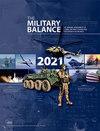Chapter Three: North America
Q3 Social Sciences
引用次数: 0
Abstract
While the US defence budget’s USD715 billion top line constitutes an USD11.27bn increase on the enacted FY2021 US defence budget, the FY2022 budget request is essentially flat in real terms when adjusted for inflation. Reflecting the Pentagon’s focus on the Indo-Pacific, the air force and navy budgets are set to increase, making up 52% of the top-line DoD budget in FY2022, up from 48% in the enacted FY21 budget. The US conducted its Global Posture Review during 2021. The Review was anticipated to reshape global United States military deployments, likely heralding reductions in all regions bar Europe and the IndoPacific, where there were to be increased infrastructure developments with a focus on survivability. The US army is recapitalising its mobile air defence. The first prototype M-SHORAD Increment 1 vehicles arrived in Germany in early 2021. Meanwhile, M-SHORAD Increment 2 is a directed-energy variant. Another project, the Indirect Fire Protection Capability (IFPC) Increment 2, is designed to tackle threats including from uninhabited aerial systems and cruise missiles. While uncertainty remains over plans to increase the size of the US navy’s fleet, there has been consistent focus on an eventual fleet that is more distributed, with a shift in balance to smaller surface combatants and with significant numbers of uninhabited surface and underwater vehicles. The US air force’s stated acquisition target of 1,763 F-35As is coming under scrutiny. F-15EX Eagle IIs are being bought to replace F-15Cs, and there was talk of restarting F-16 acquisition or even building a new successor. Meanwhile, a demonstrator for elements of the Next-Generation Air Dominance programme reportedly flew in 2021. In September, Secretary of the Air Force Frank Kendall said that five B-21 bombers were in various states of production. Air transport and air refuelling remain essential to US expeditionary operations, as the evacuation from Afghanistan showed. This also highlighted the importance of overseas bases for logistical support. There are as yet no identified replacements for the C-17 or C-5M; a C-17 sustainment contract was awarded in late 2021. Canada and the US are building more icebreakers. Three new heavy icebreakers are being procured for the US Coast Guard, to be followed by three medium icebreakers. In June 2021, the Royal Canadian Navy commissioned the first of its six planned Harry DeWolfclass Arctic Offshore Patrol Ships.第三章:北美
虽然美国国防预算的7150亿美元的顶线构成了2021财年美国国防预算的112.7亿美元的增长,但经通货膨胀调整后,2022财年预算申请的实际价值基本持平。空军和海军预算将增加,占国防部2022财年预算的52%,高于21财年预算的48%,这反映了五角大楼对印太地区的关注。美国在2021年进行了全球态势评估。《评估报告》预计将重塑美国在全球的军事部署,可能预示着除欧洲和印太地区以外的所有地区的军事部署都将减少,这些地区将增加基础设施的发展,重点是生存能力。美国陆军正在对其机动防空系统进行资本重组。第一辆M-SHORAD增量1型原型车于2021年初抵达德国。同时,M-SHORAD增量2是一种定向能变体。另一个项目是间接火力防护能力(IFPC)增量2,旨在应对包括无人空中系统和巡航导弹在内的威胁。尽管增加美国海军舰队规模的计划仍存在不确定性,但人们一直关注的是,最终的舰队将更加分散,在平衡上转向较小的水面战斗舰艇,并配备大量无人居住的水面和水下航行器。美国空军宣称的1763架f - 35a的采购目标正在受到审查。购买F-15EX鹰ii是为了取代f - 15c,而且有传言说要重新采购F-16,甚至建造新的继任者。与此同时,据报道,下一代空中优势项目的一架演示机于2021年试飞。9月,空军部长弗兰克·肯德尔(Frank Kendall)表示,5架B-21轰炸机处于不同的生产状态。正如从阿富汗撤离所显示的那样,航空运输和空中加油对美国的远征行动仍然至关重要。这也突出了海外基地对后勤支援的重要性。目前还没有确定C-17或C-5M的替代品;2021年底授予了一份C-17维护合同。加拿大和美国正在建造更多的破冰船。美国海岸警卫队正在采购三艘新的重型破冰船,随后将采购三艘中型破冰船。2021年6月,加拿大皇家海军服役了其计划中的六艘哈里·德沃尔夫级北极近海巡逻舰中的第一艘。
本文章由计算机程序翻译,如有差异,请以英文原文为准。
求助全文
约1分钟内获得全文
求助全文
来源期刊

The Military Balance
Social Sciences-Political Science and International Relations
CiteScore
1.00
自引率
0.00%
发文量
18
 求助内容:
求助内容: 应助结果提醒方式:
应助结果提醒方式:


